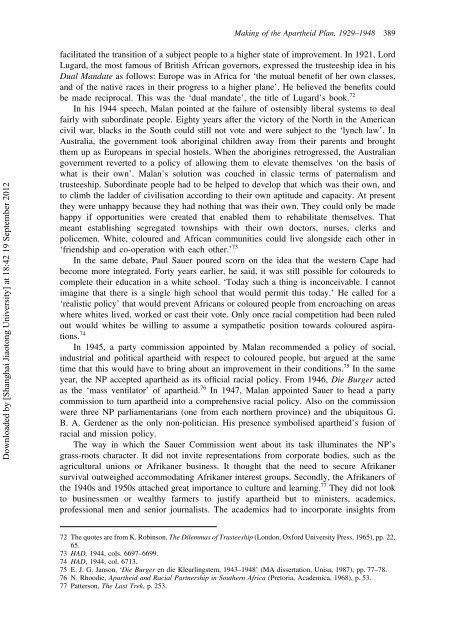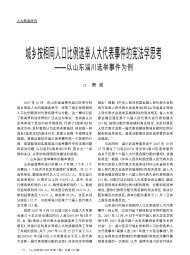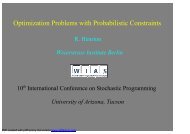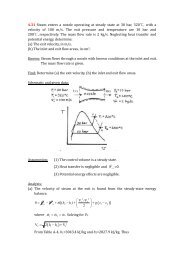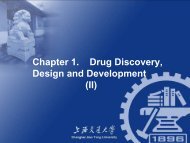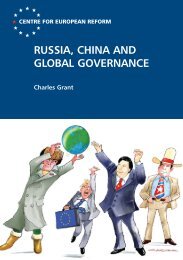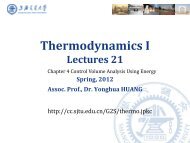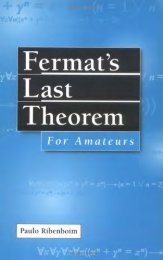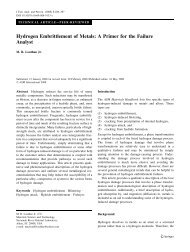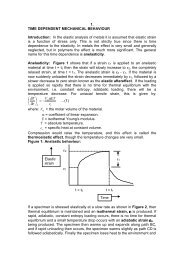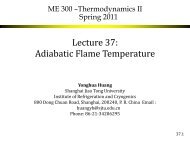The Making of the Apartheid Plan, 1929-1948* - CC
The Making of the Apartheid Plan, 1929-1948* - CC
The Making of the Apartheid Plan, 1929-1948* - CC
You also want an ePaper? Increase the reach of your titles
YUMPU automatically turns print PDFs into web optimized ePapers that Google loves.
<strong>Making</strong> <strong>of</strong> <strong>the</strong> Apar<strong>the</strong>id <strong>Plan</strong>, <strong>1929</strong>–1948 389<br />
Downloaded by [Shanghai Jiaotong University] at 18:42 19 September 2012<br />
facilitated <strong>the</strong> transition <strong>of</strong> a subject people to a higher state <strong>of</strong> improvement. In 1921, Lord<br />
Lugard, <strong>the</strong> most famous <strong>of</strong> British African governors, expressed <strong>the</strong> trusteeship idea in his<br />
Dual Mandate as follows: Europe was in Africa for ‘<strong>the</strong> mutual benefit <strong>of</strong> her own classes,<br />
and <strong>of</strong> <strong>the</strong> native races in <strong>the</strong>ir progress to a higher plane’. He believed <strong>the</strong> benefits could<br />
be made reciprocal. This was <strong>the</strong> ‘dual mandate’, <strong>the</strong> title <strong>of</strong> Lugard’s book. 72<br />
In his 1944 speech, Malan pointed at <strong>the</strong> failure <strong>of</strong> ostensibly liberal systems to deal<br />
fairly with subordinate people. Eighty years after <strong>the</strong> victory <strong>of</strong> <strong>the</strong> North in <strong>the</strong> American<br />
civil war, blacks in <strong>the</strong> South could still not vote and were subject to <strong>the</strong> ‘lynch law’. In<br />
Australia, <strong>the</strong> government took aboriginal children away from <strong>the</strong>ir parents and brought<br />
<strong>the</strong>m up as Europeans in special hostels. When <strong>the</strong> aborigines retrogressed, <strong>the</strong> Australian<br />
government reverted to a policy <strong>of</strong> allowing <strong>the</strong>m to elevate <strong>the</strong>mselves ‘on <strong>the</strong> basis <strong>of</strong><br />
what is <strong>the</strong>ir own’. Malan’s solution was couched in classic terms <strong>of</strong> paternalism and<br />
trusteeship. Subordinate people had to be helped to develop that which was <strong>the</strong>ir own, and<br />
to climb <strong>the</strong> ladder <strong>of</strong> civilisation according to <strong>the</strong>ir own aptitude and capacity. At present<br />
<strong>the</strong>y were unhappy because <strong>the</strong>y had nothing that was <strong>the</strong>ir own. <strong>The</strong>y could only be made<br />
happy if opportunities were created that enabled <strong>the</strong>m to rehabilitate <strong>the</strong>mselves. That<br />
meant establishing segregated townships with <strong>the</strong>ir own doctors, nurses, clerks and<br />
policemen. White, coloured and African communities could live alongside each o<strong>the</strong>r in<br />
‘friendship and co-operation with each o<strong>the</strong>r.’ 73<br />
In <strong>the</strong> same debate, Paul Sauer poured scorn on <strong>the</strong> idea that <strong>the</strong> western Cape had<br />
become more integrated. Forty years earlier, he said, it was still possible for coloureds to<br />
complete <strong>the</strong>ir education in a white school. ‘Today such a thing is inconceivable. I cannot<br />
imagine that <strong>the</strong>re is a single high school that would permit this today.’ He called for a<br />
‘realistic policy’ that would prevent Africans or coloured people from encroaching on areas<br />
where whites lived, worked or cast <strong>the</strong>ir vote. Only once racial competition had been ruled<br />
out would whites be willing to assume a sympa<strong>the</strong>tic position towards coloured aspirations.<br />
74<br />
In 1945, a party commission appointed by Malan recommended a policy <strong>of</strong> social,<br />
industrial and political apar<strong>the</strong>id with respect to coloured people, but argued at <strong>the</strong> same<br />
time that this would have to bring about an improvement in <strong>the</strong>ir conditions. 75 In <strong>the</strong> same<br />
year, <strong>the</strong> NP accepted apar<strong>the</strong>id as its <strong>of</strong>ficial racial policy. From 1946, Die Burger acted<br />
as <strong>the</strong> ‘mass ventilator’ <strong>of</strong> apar<strong>the</strong>id. 76 In 1947, Malan appointed Sauer to head a party<br />
commission to turn apar<strong>the</strong>id into a comprehensive racial policy. Also on <strong>the</strong> commission<br />
were three NP parliamentarians (one from each nor<strong>the</strong>rn province) and <strong>the</strong> ubiquitous G.<br />
B. A. Gerdener as <strong>the</strong> only non-politician. His presence symbolised apar<strong>the</strong>id’s fusion <strong>of</strong><br />
racial and mission policy.<br />
<strong>The</strong> way in which <strong>the</strong> Sauer Commission went about its task illuminates <strong>the</strong> NP’s<br />
grass-roots character. It did not invite representations from corporate bodies, such as <strong>the</strong><br />
agricultural unions or Afrikaner business. It thought that <strong>the</strong> need to secure Afrikaner<br />
survival outweighed accommodating Afrikaner interest groups. Secondly, <strong>the</strong> Afrikaners <strong>of</strong><br />
<strong>the</strong> 1940s and 1950s attached great importance to culture and learning. 77 <strong>The</strong>y did not look<br />
to businessmen or wealthy farmers to justify apar<strong>the</strong>id but to ministers, academics,<br />
pr<strong>of</strong>essional men and senior journalists. <strong>The</strong> academics had to incorporate insights from<br />
72 <strong>The</strong> quotes are from K. Robinson, <strong>The</strong> Dilemmas <strong>of</strong> Trusteeship (London, Oxford University Press, 1965), pp. 22,<br />
65.<br />
73 HAD, 1944, cols. 6697–6699.<br />
74 HAD, 1944, col. 6713.<br />
75 E. J. G. Janson, ‘Die Burger en die Kleurlingstem, 1943–1948’ (MA dissertation, Unisa, 1987), pp. 77–78.<br />
76 N. Rhoodie, Apar<strong>the</strong>id and Racial Partnership in Sou<strong>the</strong>rn Africa (Pretoria, Academica, 1968), p. 53.<br />
77 Patterson, <strong>The</strong> Last Trek, p.253.


